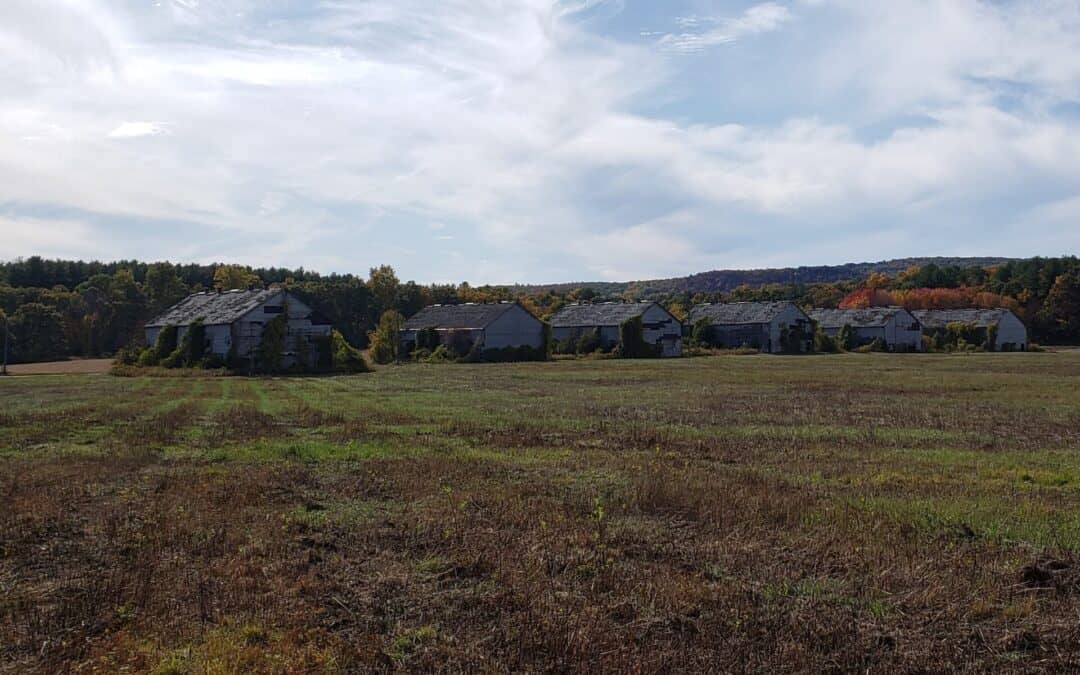This article was originally featured in our November 2019 Connecticut Preservation News and writeen by Catherine Labadia from the CT State Historic Preservation Office.
To understand the consequence of history, it is easiest to relate the past to the present in our own lives. We are the collection of our experiences, and while there are always events that immediately present themselves as significant, hindsight may reveal the consequential result of otherwise seemingly mundane activities. As preservationists, we frequently honor the obviously impactful moments in history or places of consequence because they have high visibility. In contrast, personal stories of inspiration are more difficult to recognize. This is true of one person that came to Connecticut and who would go on to have an impact on the lives of Americans that cannot be overstated: Dr. Martin Luther King, Jr.
The State Historic Preservation Office (SHPO) recently has received a $30,000 African American Civil Rights Grant from the National Park Service to document and recognize places associated with King and other Morehouse College students who came to work in Connecticut’s tobacco fields during the 1940s. The funding will be used to expand on existing research and prepare a document called a Multiple Property Documentation Form (MPDF) that can be used to nominate properties with a related context to the National Register of Historic Places or update existing listings to include a new theme of significance. The MPDF is an important first step in ensuring that Connecticut’s connection to the birth of the Civil Rights Movement is recognized, honored appropriately, and, most importantly, preserved.
Tobacco was an important crop in Connecticut in the 20th century. Its production was labor-intensive, and labor shortages during World War I forced employers to seek workers from greater distances. The president of the Connecticut Tobacco Company turned to the recently established National Urban League, which served as an intermediary that arranged for the employment of African Americans, including a group of students from Morehouse College in Atlanta.
The arrangement continued for more than two decades, but the terms of employment did not become reliable until World War II, when the local labor pool once again was reduced. In the 1940s, large tobacco corporations created a wholly dependent labor force by providing housing for migrant laborers in residential camps. This led to a formal recruitment program of high school and college students, both men and women, from Southern states. For at least one of these students, Martin Luther King, Jr., the experience was transformative.
The story of these students remained largely forgotten until thirty years ago, when King’s personal papers were made available to scholars for the first time. The five letters King wrote to his parents during the two summers he worked in Connecticut’s tobacco fields (1944 and 1947) demonstrated the impact of his time in a desegregated state.
“I never thought that a person of my race could eat anywhere but we ate in one of the finest restaurants in Hartford,” he wrote on June 18, 1944. “And we went to the largest shows there.” Recognizing that this was an important chapter in King’s life, the Hartford Courant conducted an interview in 1991 with William Pickens, a fellow Morehouse student who worked alongside King. Pickens recounted their amazement that local high school students had joined them for lunch.
“It was just an unfamiliar situation that one could chat with a white person who was a peer,” Pickens said. “They were workers just like we were and we could talk with them briefly during lunch time and not get taken to jail for it.”
While these letters made a connection between Connecticut and the King legacy, it was The Autobiography of Martin Luther King Jr. published in 1998, that communicated the powerful impression his time in Connecticut had on him. He said, “After that summer in Connecticut, it was a bitter feeling going back to segregation.”
Although racism and discrimination existed in Connecticut, the absence of state-sanctioned segregation, like the Jim Crow laws that governed life in the South, must have given the impression of an idealized society to the thousands of young African American students who came to our state for summer work programs. As Pickens stated in the 1991 article, “We’d say, ‘We’re going to God’s country,’ and that meant going to the Connecticut Valley, to New England.”
For King, Connecticut also was where he found his future calling as a minister. “Sunday morning we had church in the board house and I lead [sic] it,” he wrote in 1944. He continued by describing himself as the religious leader to more than 100 young men every Sunday. Pickens and another student, Silas W. Davis, recalled these religious meetings, observing that King did not just read from the Bible, but gave sermons about helping people. The call to become a minister and the profound influence this experience had on his life is further documented in his February 1948 application to Crozer Theological Seminary, in which King wrote that he traced his call to the ministry to “the summer of 1944 when I felt an inescapable urge to serve society.”
The churches, community halls, recreational facilities, dormitories, and tobacco barns where students from the South experienced a reprieve from segregation are an essential part of Connecticut’s history and the supporting role it played in the birth of the Civil Rights movement. During this period, Southern students laboring in Connecticut’s tobacco fields were exposed to an ideal that King recounted as having influenced their lives and led them to activism. SHPO believes that additional research may reveal similar influence on other notable Civil Rights activists. Although Connecticut also was characterized by racial and social inequalities, King saw a situation that was better than where he came from and, with his youthful passion, a vision for a better future. In letters he wrote home, King remarked about the fundamental freedoms he enjoyed while in Connecticut, “On our way here we saw some things I had never antiscipated [sic] to see…We go to any place we want to and sit anywhere we want to.”
As demand for Connecticut’s shade tobacco declined in the late 20th century, the fields, barns, and work camps associated with the tobacco industry were left to deteriorate or were demolished to make room for development. In 1984, before the Town of Simsbury knew of its association with Martin Luther King Jr., the dormitory on Barndoor Hills Road where King likely slept, cooked, and preached for the first time was destroyed by fire as part of a training exercise for volunteer firefighters. Approximately a decade later the building’s historic significance emerged in national publications, and the community mourned its loss.
Since then the Simsbury Historical Society has researched the history of Southern students recruited for summer work programs; local high school students have produced a highly praised short documentary about King’s time in Simsbury; the Town has hosted annual Martin Luther King Jr. Day events; and the Simsbury Free Library has raised funds for a memorial to King. In 2003, CT SHPO funded a research project, completed by current Connecticut Circuit Rider Stacey Vairo, about King’s time in Connecticut. The report identified seven locations that shaped his experience; of these, four are already listed on the National Register of Historic Places as contributing resources to district nominations based on architecture. Additional research also revealed properties associated with several other individuals important to the Civil Rights movement who also came to Connecticut to work in the tobacco fields, including Thurgood Marshall, Arthur Ashe, and Mahalia Jackson.
The demolition of the dormitory on Barndoor Hills Road demonstrates the importance of identifying significant historic resources before they are threatened. Its loss is somewhat understandable because properties associated with the birth of the Civil Rights movement may lack obvious architectural interest or obvious association with people or events of transcending importance. Even trained professionals could easily overlook the importance of the sites being considered for the MPDF. Between the time SHPO applied for this grant and its award, the remaining dormitory used by Morehouse students, on Hoskins Road, was demolished. The MPDF will identify places that may have been overlooked and provide additional protections before additional loss occurs. Designation is an important first step that allows SHPO to support these resources long after the grant project is complete through incentive programs, technical guidance, and partnerships.
In his own words, King acknowledged that his time in Connecticut inspired him to “serve society.” It is the place where he led his first Sunday service and where he experienced a motivational sense of equality. His youthful idealism perceived a world that could exist where people of all backgrounds could share in the same activities without distinction. The places that shaped these experiences were inspirational to a man whose life was and continues to be an inspiration to society.

